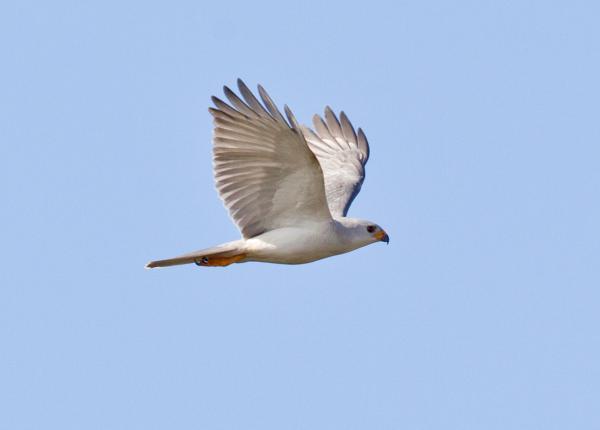Did You Know?
- This species has been known by a few other names including Variable Goshawk and White Goshawk
- The Gray Goshawk is found only in Australia and Tasmania
How The Peregrine Fund is Helping
Though The Peregrine Fund doesn't work directly with Gray Goshawks, our efforts in scientific research, habitat conservation, education, and community development help conserve birds of prey around the world. We also supply literature to researchers from our avian research library, which helps scientists around the world gather and share important information on raptor conservation. We also run the Global Raptor Impact Network which gives raptor researchers tools to more efficiently conduct their own studies while contributing to a global program. GRIN also provides citizen scientists a way to participate in raptor science and conservation.
Where it Lives
The Gray Goshawk is found in a variety of habitats including riverine forest, dense woodland, tall forest rainforests, riparian areas, open areas, and even urban zones.
What it Does
The Gray Hawk, is - surprise! surprise! - mostly all gray. But it also might be mostly white. This is because the Gray Hawk is found in two color morphs - the gray morph and the white morph. It has been described as solitary and secretive. This Goshawk is often seen making short flights and gliding between trees or soaring with shallow wingbeats over the canopy. It also known to drag opposums from their nests, known as dreys.
Why it Needs our Help
The Gray Goshawk is categorized as a species of Least Concern. However, this species is considered uncommon in parts of its range, and its population is declining. This is because of deforestation and human persecution.
What it Eats
This goshawk has a long list of prey items on its menu. It will hunt mammals, such as rabbits; birds even some as large as herons; reptiles, amphibians, arthropods, and even carrion. It hunts mainly by staying concealed on a perch in the tree canopy, or by low fast flight, quartering, and soaring, and it seizes prey on the ground or in short chases.
Nests, Eggs, and Young
The pairs build a platform nests make of sticks, which they then line with soft green leaves. The will lay 2 or 3 eggs, sometimes 4. The eggs will need to be incubated for around 30 days. After the young hatch, the nestlings will remain in the nest for another 30-38 days. After they fly from the nest for the first time, they will remain with their parents for up to six weeks as they learn to hunt and otherwise survive on their own.
Gray Goshawk and the World Center for Birds of Prey
The World Center for Birds of Prey offers fun ways to learn about birds of prey. Interactive activities, tours, interesting videos and a children's room with activities from coloring sheets to quizzes to costumes and a touch table are available for the curious mind. We also have several birds of prey on display year-around. Knowledgeable staff and volunteers are on hand to answer any questions you may have about Gray Goshawks or any other birds of prey. Though we are far away from the Grey Goshawk's range and though we don't have any goshawks on our Avian Ambassador team, the Northern Goshawk can be found in Idaho year-round. They nest in large trees within the Sawtooth National Forest located only a few hours away from The Peregrine Fund's World Center for Birds of Prey.
References:
Debus, S., G. M. Kirwan, and J. S. Marks (2020). Gray Goshawk (Accipiter novaehollandiae), version 1.0. In Birds of the World (J. del Hoyo, A. Elliott, J. Sargatal, D. A. Christie, and E. de Juana, Editors). Cornell Lab of Ornithology, Ithaca, NY, USA.
Global Raptor Information Network. 2022. Species account: Grey Goshawk Accipiter novaehollandiae. Downloaded from http://www.globalraptors.org on 28 Nov. 2022









